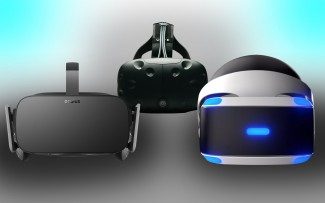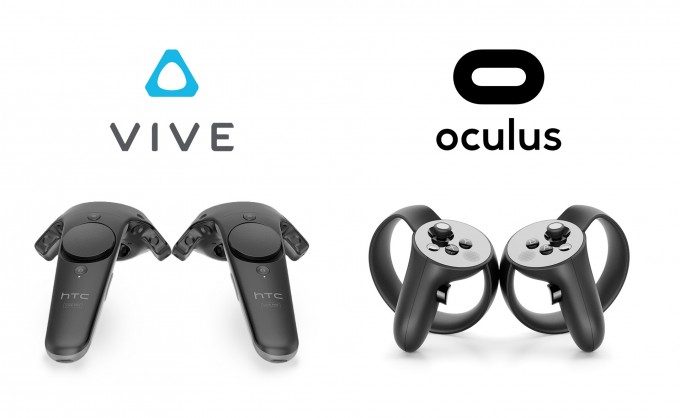Natural motion input is the clear future of VR. And while the Rift would seem to lead in price over the Vive, factoring the controllers into the equation will create a very narrow price gap, if any, between the two systems.
While Oculus has its Touch motion controllers in development, they won’t be ready by the time the Rift begins shipping at the end of March. So the company opted to include an Xbox One gamepad with each Rift as a common input device between headsets. Touch isn’t expected to ship until the second half of 2016. And that means the Rift’s $600 price doesn’t factor in the cost of motion controllers.
On the other hand, the HTC Vive will ship with no gamepad, but will instead include motion controllers out of the box. Comparing the Vive’s $800 price to the Rift doesn’t make much sense unless you consider Oculus Touch as part of the Rift package. Without knowing the price of touch, this comparison is difficult, but unless you think Touch will be exceptionally cheap, the total cost between the two systems could turn out to be negligible, if not identical.
There’s a $200 price gap between the Rift’s standalone $600 price and the Vive’s $800 price (which includes motion controllers).

We conducted a straw poll back in January to gauge our readership’s price estimates for Touch. The majority guessed it would land between $100-$199. (The majority also correctly guessed that the Vive would cost more than the Rift).
Assuming the intuition of our audience is correct, even at the low end of that spectrum ($100), that would place a mere $100 gap between the total Rift package and total Vive package. At the high end of the spectrum ($199), it would eliminate the gap all together.
Given that there aren’t many analogs, it’s tough to guess how much the price of Touch will close that gap. The biggest hint we have may be the Vive itself.
When considering the total package of each system, both include one headset, two sensors, and two motion controllers. As an outside observer, the components of each headset seem quite similar: two lenses, two custom OLED displays of the same resolution, embedded hardware for tracking, a series of cables, and the body/shell of the headset itself (each headset has one notable wildcard that the other lacks: integrated headphones on Rift and integrated camera on Vive). Unless either company has some significant price advantage among these components or in the manufacturing process, the headsets are likely to be quite evenly matched in how much they contribute to the overall system cost.
That would leave the remaining cost in the hands of the two motion controllers and two tracking sensors. Again, unless there’s some significant cost advantage in components or manufacturing between Oculus’ IR LED-based ‘Constellation’ tracking and Vive’s laser-based ‘Lighthouse’ tracking (which we haven’t heard suggested by either company), then the trackers themselves are likely to contribute equally to the cost.
And that leaves the controllers. Assuming the above is roughly true, simply comparing the $600 cost of the Rift (with no controllers) to the $800 cost of the Vive (with controllers), might just give us a solid estimate of how much they contribute to the package: $200.
One thing I think we can be sure of is that Touch can’t cost more than $200, even if Oculus has to eat a loss on it at that price; launching their motion controllers after the Vive’s while creating a higher total package cost would put them at a major disadvantage in attracting new users to their hardware platform. Look for both companies to try to out-bundle and out-discount each other as we approach holiday 2016.








